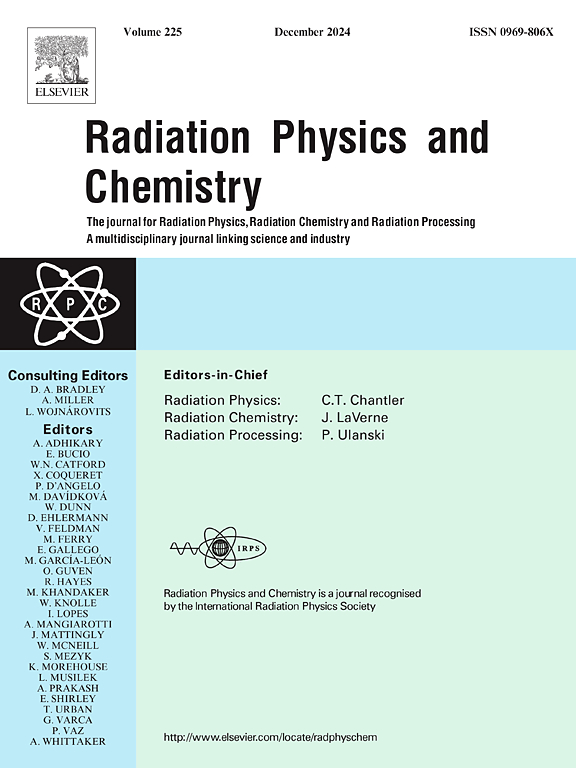Dosimetric analysis of magnetic fields impact on 192Ir MicroSelectron-HDR and BEBIG 60Co-HDR brachytherapy sources: A Monte Carlo simulation study using GATE
IF 2.8
3区 物理与天体物理
Q3 CHEMISTRY, PHYSICAL
引用次数: 0
Abstract
This study investigates the dosimetric impact of magnetic fields (MFs) on 192Ir MicroSelectron-HDR and BEBIG 60Co HDR brachytherapy sources. Monte Carlo simulations using the GATE toolkit were conducted to evaluate dosimetric parameters, including radial dose function (g(r)) and anisotropy function (F(r, θ)), as well as dose distributions under MF strengths of 1.5T and 3T across different orientations. The results show that 192Ir MicroSelectron-HDR exhibits minimal perturbations in dosimetric parameters, with deviations consistently below 1 %, making it a robust option for MRI-guided brachytherapy. Conversely, 60Co sources demonstrate significant dose distortions, with up to 27 % dose enhancement near the source and notable anisotropic effects under MF influence, necessitating MF-specific corrections in treatment planning systems. The results underscore the importance of incorporating MF-induced effects into clinical workflows for MRI-guided brachytherapy, particularly for 60Co sources.
求助全文
约1分钟内获得全文
求助全文
来源期刊

Radiation Physics and Chemistry
化学-核科学技术
CiteScore
5.60
自引率
17.20%
发文量
574
审稿时长
12 weeks
期刊介绍:
Radiation Physics and Chemistry is a multidisciplinary journal that provides a medium for publication of substantial and original papers, reviews, and short communications which focus on research and developments involving ionizing radiation in radiation physics, radiation chemistry and radiation processing.
The journal aims to publish papers with significance to an international audience, containing substantial novelty and scientific impact. The Editors reserve the rights to reject, with or without external review, papers that do not meet these criteria. This could include papers that are very similar to previous publications, only with changed target substrates, employed materials, analyzed sites and experimental methods, report results without presenting new insights and/or hypothesis testing, or do not focus on the radiation effects.
 求助内容:
求助内容: 应助结果提醒方式:
应助结果提醒方式:


